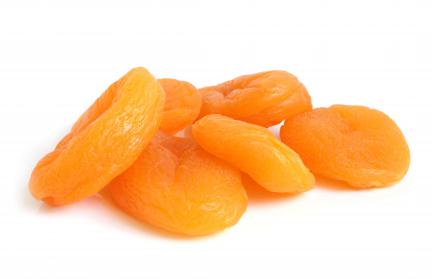Apricots
The apricot is a small tree of the rose family and reaches a height of up to 6 meters. The fruit is orange with a velvety skin. The botanical name Prunus armeniaca means "Armenian plum" as it was long believed that the apricot was native to Armenia. Today genetic analysis tells us that their home is in Central Asia. In Europe, apricots were thought to have an aphrodisiac effect. In China, the fruit is a symbol of feminine beauty and the wish to have children.
The original or wild apricot is sour in taste and its core bitter. The sweet apricot that is known today was cultivated by a refining process in which the apricot is grown with sweet kernels. In addition to wild apricots, there exist more than 40 different varieties today. The apricot tree is very resistant and tolerates cold winters and can also be grown at higher altitudes. Apricot trees have white to pale pink, fragrant flowers. Apricots are the first fruits of the year and are harvested in the northern hemisphere as early as June. The main supplier of sweet dried apricots is Turkey. The largest growing area is located in the eastern province of Malatya on the upper reaches of the Euphrates - the sunny and dry climate offers perfect conditions. The apricots are pitted on the spot and dried as a whole fruit. Other countries of origin are Iran, South Africa and China. Iranian and South African apricots are sour in taste, unlike malatya apricots.
Dried apricots are usually sulphurized, preserving the product and preserving its colour. The maximum tolerance in the EU for sulfur is 2,000 ppm. Unsulphured apricots darken, turn brown and are sweeter in flavour. The moisture of dry apricots should not exceed 24%.




